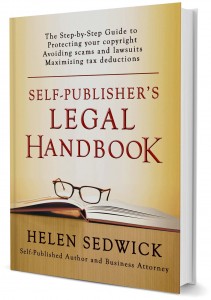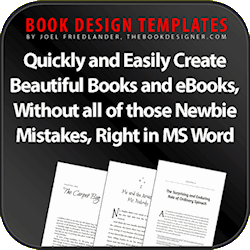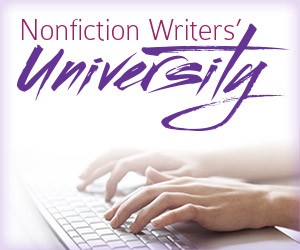
Image from Dreasmstime.com
Suppose you find the perfect image for your book cover on the internet—a plucky redhead with a perfect pout. Even better, the photo is available under a Creative Commons attribution-only license that permits commercial use. What a money saver!
But wait. Do you have a release from the plucky redhead? Do you need one?
Or you attend a writers’ conference and take photos of a famous author speaking at the podium. Later, you capture that same author when he is sloppy-faced and drunk at a large reception. Later still, you snap a photo of him punching a writing rival in the restroom. Can you post those images on Pinterest and Facebook without risking a lawsuit?
Writers should be nervous when incorporating images showing identifiable people in their blogs, books, or social media postings. Violating privacy and publicity rights is a potentially costly mistake.
But you don’t want to walk around with blank releases in your pocket. And what if the photos show hundreds of faces? Do you need releases from every recognizable person? Without releases, are you limited to posting photos of cute puppies and selfies?
Using Images with Identifiable People
The rules about using images with recognizable people come down to two considerations:
- Did the person in the photo have a reasonable expectation of privacy?
- How is the image being used?
You need to consider both. Passing one test is not enough.
Did the person has a reasonable expectation of privacy?
Generally, people do not have a reasonable expectation of privacy for anything they do in public. The exception is a performance or meeting where you are informed that taking photographs is prohibited. In those situations, you make an implied promise to honor the no-photo request as a condition to attending the performance or meeting.
If a photo was taken in a private setting, such as a home or office, you should assume you need permission before you post or publish any image showing identifiable people. Contact everyone recognizable in the photo and ask for a release. I provide a sample below.
So for the image of the redhead, look closely to see if the photo was taken in a public place? Since it is often impossible to know, I recommend against using any Creative Commons image showing recognizable faces unless it was obviously taken in a public place.
Regarding the famous author, you may assume the author had no expectation of privacy when speaking at the podium and getting drunk at the reception, since both were i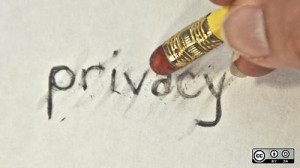 n public.
n public.
The punch in the restroom is less certain. Ask yourself whether the author had a reasonable expectation of privacy. Was it a public restroom at a convention center or a private bathroom at the host’s home? Was the author too drunk to understand his actions were in plain view? There is no right answer here; only factors to consider, including non-legal factors, such as your reputation in the writing community.
There is an exception if the image is newsworthy or addresses a matter of public interest (something decided by a court). In those cases, you may be able to post and publish the photo. Courts balance First Amendment issues against the rights of privacy. However, I would not do so without going over the specifics with an experienced attorney.
Obviously, don’t climb fences, peer through windows, hack computers or phones, or stalk people to get their photos. Courts are particularly punitive about intrusive measures.
And never venture into Revenge Porn; a jilted lover posting nude images of his (yes, it’s almost always his) former partner without permission. In some states and countries, Revenge Porn is a crime.
Is your use commercial?
Do not use an image of a recognizable person for advertising or promotional purposes ever, even if it was taken in a public setting, is available under a Creative Commons license, or is in the public domain, unless you have written permission. Using anyone’s image for commercial purposes violates that person’s right to publicity. You could be liable for damages, including punitive damages. In some states, these rights survive for up to 75 years after a person’s death.
The line between commercial and non-commercial is fuzzy. Using an image on a book cover, t-shirts or other merchandise is commercial, but posting it on a blog or social media site that is informative and editorial is probably not. Use common sense. How would you feel if you were in the photo?
To return to our hypothetical famous author, you may post an image of the two of you shaking hands or sharing a beer, but don’t say or imply that the author gave your book glowing reviews without written consent. I would not put those images on the back of your book without consent; that’s too closely related to selling a product.
As for the plucky redhead, contact the original photographer and ask whether a release was obtained or is possible. If you use the image on your book cover without a release, it could cost you plenty.
Will your use imply any advocacy or endorsement?
Even if the use is not commercial, do not use a person’s likeness to imply that the person advocates or supports a certain political, religious, charitable or other position without a clear, written release. Again, this violates privacy and publicity rights.
Does your use of the image create a false impression?
Consider the context in which you are using the image. If you are writing a post about violent street gangs on a particular street and use an image of a young man walking down that street, you could be implying the young man is part of a gang. Even if you do not say the young man is a gang member, you could be defaming him by portraying him in a “false light.”
Similarly, don’t insert yourself into photos.
An attorney had her license suspended for pasting herself into dozens of celebrity photos as part of promoting her entertainment law practice. What was she thinking?
How high is the M.E. factor?
As an attorney, I am often asked, “Can someone sue me?” Unfortunately, just about anyone may sue you, even if the suit is frivolous. My rule of thumb about litigation risk is the M.E. Factor: money multiplied by emotion. If a lot of money is involved, then a lawsuit is likely even if there is little emotion involved. On the other hand, if someone is angry, offended, or threatened, then they are likely to sue regardless of a small financial stake. If you get someone peeved enough, you may awake one morning to a process server banging on your door.
What about stock images?
If you license an image from one of the large stock image companies such as IStockPhoto.com, Dreamstime.com, or Getty Images, then they generally guarantee they have obtained all necessary releases, but only if you are paying for a “royalty-free” license. An “editorial license” is more limited and does not permit commercial use. So always opt for “royalty-free” licenses.
Bottom line: Photographs taken in public settings are almost always fair game. You may post and publish them for any purposes other than commercial or promotional or in any way that implies a connection or endorsement.
Here’s a sample Release you are free to use.
I hereby release and grant to ______________________ (your name) (Photographer), and his or her assigns, licensees, and legal representatives, the irrevocable right to use any photographs of me taken by the Photographer, in all forms and media, whether now existing or not yet created, and in all manners, including composite or distorted representations, for advertising, trade, promotional, political, charitable, education, or any other lawful purposes. I hereby waive any right to inspect or approve the finished versions, including written copy that may be created in connection therewith. I have read this RELEASE AND CONSENT and am fully familiar with its contents.
Signed___________________________________________
Contact information ___________________________________
Date ___________, 20____
(If applicable) I am the parent or guardian of the minor named above and have the legal authority to execute the above release. I approve the foregoing and waive any rights in the premises.
Signed___________________________________________
Contact information ___________________________________
Date ___________, 20____
An earlier version of this post appeared on Nina Amir’s Write Fiction Now! Blog.

I love my readers.
Not because they buy my books. I like that.
I love my readers because they ask interesting questions. I read your emails, sit back and give an audible hmmmm. Your questions challenge me to take abstract legal concepts and apply them to real people, real books, real problems. Often with a new twist.
From time to time, I like to share some of the general questions readers send me and my responses. I have revised the letters to make them more generic and removed all identifying information.
Today, some copyright questions:
May I use images for publishing books if I put a resource and reference in the book?
Many people make the mistake of thinking that giving credit to the original illustrator, photographer, or writer is enough to protect them from a claim of copyright infringement. It’s not. If the original image or other work is subject to copyright, then assume you need to get permission to use it. There are some exceptions for what is called fair use, but the fair use exception is narrower than many people realize. I would not rely on the fair use exception without consulting with an attorney with a firm understanding of the law and the exception.
I am translating Little Women into Bantu and will be self-publishing the book. Little Women is in the public domain, and my question concerns some illustrations that were used in an edition of the book published in the 1970s. Are these illustrations also in the public domain?
Very good question. You are correct that Little Women by Louisa May Alcott is in the public domain because it was first published before 1923. However, the illustrations would be protected by their own copyright. They do not lose copyright protection by being used together with a public domain work. So, if those illustrations were created in 1923 or later, you should not use the illustrations without permission from the copyright holder, which is most likely the publisher of the 1970s edition.
I have written a novel about real people and real events in the 1920s. Some of these people were public figures, and all of them are dead. I took letters I found in my research, including some that were in books printed in the 1940s. I have rewritten the original letters in my own words and used them in my novel. Their meaning is similar but the words are different. I have also taken events and facts from old nonfiction books and used them in the novel. The facts are all public knowledge and in the public record. I have stated the sources. Can I get into legal trouble for this?
You are on the right track. Factual names, events, and information are not protected by copyright. You may use them as the basis of a novel. In fact, many bestsellers fictionalize history by using historical figures and events and creating scenes, dialogue, and a supporting cast of characters. Look at Wolf Hall by Hilary Mantel.
In case any of the original letters are subject to copyright protection, rewriting the letters should get you around the copyright hurdles.
I’m a new author and was just wondering do I really have to wait until I get my copyright registration certificate from the U.S. Copyright Office in order to start selling my book? The wait just kills me when I just want to get my book out for people to read! Please help me!
You don’t have to wait at all. You may start selling your book right away. Yes, before your register the copyright, even if you never register the copyright. There are benefits to registering the book within three months following its first publication; you may be able to collect statutory damages and recover attorneys’ fees in an infringement case. But even if you miss that three-month window, it’s still worth registering your copyright. It creates a record of what your book looked like as of the date of registration. Plus, you cannot sue someone for infringement until you register the copyright.
I have transcribed letters written during the Civil War from my great grandfather plus added background and history to make a complete book of about 250 pages. My question concerns the ownership of my book. The letters had been in the possession of my cousins and they sent them to me for this project. Do I need some kind of release? Do we have joint ownership, or since I did all the work, do I have ownership of the transcriptions and therefore the book?
Good questions. First, let’s distinguish between the ownership of the physical letters and the ownership of the copyright in the content of the letters.
Since the physical letters have been in your cousins’ possession all these years, let’s assume they were given ownership of the printed letters along the way. For that reason, it would be preferable for you to get permission from them to use and transcribe the letters. An email will do.
As far as ownership of the contents of the letters, at this point the contents are in the public domain because the copyright has expired. Neither you nor your cousins own the contents or underlying story. Anyone may use the content and the underlying story idea.
(By the way, if the letters were from the Vietnam War, any copyright interest in the contents of the letter would belong jointly to all the heirs. Any one of you could reprint those contents without permission from the other heirs, but you would have to share any profits with all the heirs. But I am digressing.)
There is no copyright to own in the transcriptions. Merely making a copy of something is not considered a “creative” work entitled to copyright protection.
However, you own the copyright to the material you wrote for the book, the rest of the 250 pages. Your cousins do not. If they want to write their own books using the letters and historical information, then may do that, and they would own the copyright in their own writings. But not yours.
I hope this helps.
 Suppose you are about to submit a query and sample chapters to an agent. A pop-up window appears requiring you to agree to a bunch of legalese including the following:
Suppose you are about to submit a query and sample chapters to an agent. A pop-up window appears requiring you to agree to a bunch of legalese including the following:
I will not assert against Agent any claim based upon infringement, plagiarism, breach of confidentiality, breach of implied contract, unfair competition, theft of ideas, concepts or characters, or any other claim arising out of the use or alleged use of my Manuscript by Agent or anyone gaining access to the Manuscript through Agent.
Your fingers hover over Enter. Are you giving the agent permission to steal your work?
You might well be, depending on the legalese. So take some time to study the language before you hit Submit.
The document is called a Submission Release. They have been common in the film industry for many years, and they are starting to show up in the literary world as well.
In our litigious society, agents and producers use these releases to protect themselves from claims that they stole story ideas and other creative materials that come their way, whether solicited or unsolicited. Successful projects, such as Disney’s FROZEN, frequently generate lawsuits by writers who point to similarities in plot, theme, and characters as evidence that their work was stolen. The more successful the project, the more likely these suits will arise.
In theory, I understand the need for Submission Releases and might agree to one but only if it recites what is already true. Like it or not, writers take some risk in sending out manuscripts, as I discuss in my post, Can Your Million Dollar Idea Be Protected?
But too many Submission Releases go too far and require writers to give up valuable rights and remedies for nothing.
So what’s acceptable and what’s not?
Acceptable:
- The writer acknowledges that the agent receives many story ideas, concepts, suggestions, manuscripts, and other submissions and that some of those submissions may contain elements similar or identical to the writer’s work.
- The writer acknowledges that certain elements of the work are not protected by copyright, such as ideas, concepts, and themes, as well as generic settings, plots, and characters.
- The writer agrees that he shall not be entitled to any compensation because of the use of similar or identical material that was developed independently. (Look for this concept; it’s key.)
- The writer warrants that he owns all rights to the manuscript and has the right to negotiate with the agent.
- The writer has kept a copy of the submission.
- For unsolicited submissions, the writer acknowledges that the agent has no obligation to review the submission, to provide feedback, or to respond and has no duty to maintain the confidentiality of the submission.
If all Submission Releases stopped there, then I could end this blog post right now. But unfortunately, most go on to say the following:
Unacceptable:
- The writer agrees that the agent may use any element of the work that is not protected by copyright without compensation to the writer, even if the new work is not created independently.
- In the event the agent does use any of the writer’s copyrighted material without authorization, then the writer’s compensation will be limited to fair compensation as determined by an arbitrator in [London, LA, NYC or someplace expensive and inconvenient]. In other words, you could spend years and big bucks fighting over what is fair compensation.
 What’s a writer to do?
What’s a writer to do?
For now, writers may still submit their work to the great majority of agents without agreeing to a Submission Release. So if you are faced with a Release and it’s too broad, or you simply don’t like the idea at all, then don’t submit to any agent requiring a Submission Release.
Someday, the book world may adopt the film industry’s practice of using Submission Releases. For now, these releases are easy to avoid. And the more writers walk away from these releases, the better the chances agents will stop asking for them.
 Many authors assume the legal disclaimers at the front of their books are supposed to be boring. They presume some pricey lawyers devised standard legalese, and they dare not depart from the norm.
Many authors assume the legal disclaimers at the front of their books are supposed to be boring. They presume some pricey lawyers devised standard legalese, and they dare not depart from the norm.
Not so.
The law does not require a disclaimer to be boring. In fact, just the opposite is true. The more interesting the disclaimer, the more likely it will be read. From a lawyer’s point of view, a well-written, well-read disclaimer is best of all.
Many writers have a lot of fun with their disclaimers, particularly for memoirs. Let’s look at a few.
Disclaimers for Fiction
Every reader is familiar with the typical fiction disclaimer.
This is a work of fiction. Names, characters, business, events and incidents are the products of the author’s imagination. Any resemblance to actual persons, living or dead, or actual events is purely coincidental.
I find nothing wrong with this disclaimer, except that it won’t work in many instances. What if your novel includes real events, places and historical figures? What if parts of your book are based on your own life?
Let’s take a look at how some authors have dealt with these issues. Thomas Wolf in A Man in Full, acknowledges that parts of his story are from real life:
This novel’s story and characters are fictitious. Certain long-standing institutions, agencies, and public offices are mentioned, but the characters involved are wholly imaginary.
Margaret Atwood in Cat’s Eye tries to dispel readers’ assumption that the book is the alter-ego of the writer:
This is a work of fiction. Although its form is that of an autobiography, it is not one. Space and time have been rearranged to suit the convenience of the book, and with the exception of public figures, any resemblance to persons living or dead is coincidental. The opinions expressed are those of the characters and should not be confused with the author’s.
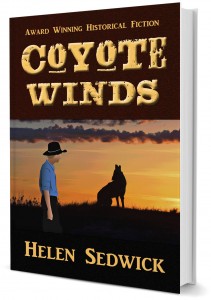 A disclaimer can also set the historical context. In my novel Coyote Winds, I inserted:
A disclaimer can also set the historical context. In my novel Coyote Winds, I inserted:
Coyote Winds is a work of fiction. Any resemblance to actual events or persons, living or dead, is entirely coincidental. The Dust Bowl and the Great Depression, however, were very real. For the purpose of the story, I condensed some of the historical events into two years, while in reality the dust storms, food riots, and other historical events played out over several years.
Suppose you’ve taken an historical figure and given him dialogue and personality. Here’s how D. M. Thomas dealt with using Freud as a character in The White Hotel:
The role played by Freud in this narrative is entirely fictional. My imagined Freud does, however, abide by the generally known facts of the real Freud’s life, and I have sometimes quoted from his works and letters, passim. The letters . . . and all the passages relating to psychoanalysis . . . have no factual basis.
The lesson here is – if you’ve taken liberties with historical facts and figures, be open about it. Make your disclaimer part of the experience of the book.
Disclaimers for memoir
Many memoir writers use plain vanilla disclaimers such as:
This book is memoir. It reflects the author’s present recollections of experiences over time. Some names and characteristics have been changed, some events have been compressed, and some dialogue has been recreated.
That works fine, but some of the great memoir writers use their literary voices to a much better effect.
 Mary Karr, in her memoir The Liars’ Club, apologizes for nothing. She starts the book with her sister asking her mother whether a bullet hole in the kitchen wall happened when her mother shot at her father.
Mary Karr, in her memoir The Liars’ Club, apologizes for nothing. She starts the book with her sister asking her mother whether a bullet hole in the kitchen wall happened when her mother shot at her father.
No, her mother explained. That’s where she shot at Larry. She points at another wall. “Over there’s where I shot at your daddy.”
As Karr explains, when fortune hands you such characters, why bother to make stuff up?
In The Boy’s Life by Tobias Wolf, buries his disclaimer in his acknowledgments. As he thanks those who read drafts of the book, he says:
I have been corrected on some points, mostly of chronology. Also my mother claims that a dog I describe as ugly was actually quite handsome. I’ve allowed some of these points to stand, because this is a book of memory, and memory has its own story to tell. But I have done my best to make it tell a truthful story.
John Maberry, a fellow author and attorney, crafted an excellent disclaimer for his memoir, Waiting for Westmoreland.
This work depicts actual events in the life of the author as truthfully as recollection permits and/or can be verified by research. Occasionally, dialogue consistent with the character or nature of the person speaking has been supplemented. All persons within are actual individuals; there are no composite characters. The names of some individuals have been changed to respect their privacy.
And Michael N. Marcus wrote the following for his memoir Stories I’d Tell My Children (But Maybe Not Until They’re Adults):
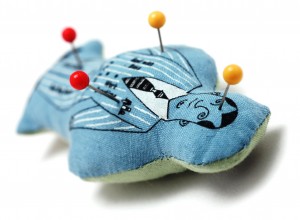 I changed the names of some nice people to maintain their privacy. I changed names of some bad people if I’m no longer as pissed off as I used to be and I don’t want to embarrass them or their descendants. Or if I think someone might sue me or beat me up.
I changed the names of some nice people to maintain their privacy. I changed names of some bad people if I’m no longer as pissed off as I used to be and I don’t want to embarrass them or their descendants. Or if I think someone might sue me or beat me up.
I’m a writer, not a fighter.
The names of some very bad people have not been changed, and I’m not afraid to “say ill about the dead,” especially if they pissed me off. Dead people can’t sue me.
Disclaimers for nonfiction
Interesting, I thumbed through a lot of nonfiction books and found no disclaimers. I suspect the authors and publishers stand on their own research without hiding behind a disclaimer. But I found a great one in Rebecca Skloot’s The Immortal Life of Henrietta Lacks. Her disclaimer turns the traditional fiction disclaimer on its head:
This is a work of nonfiction. No names have been changed, no characters invented, no events fabricated.
In contrast, any book giving professional advice, whether it’s business, legal, medical or tax advice, is full of disclaimers. For my book, Self-Publisher’s Legal Handbook, I go on and on with disclaimers, including the following:
Although I am a lawyer, I am not your lawyer. Reading this book does not create an attorney-client relationship between us. . . . This Handbook should not be used as a substitute for the advice of a competent attorney admitted or authorized to practice in your jurisdiction.
Here’s another excellent disclaimer. I found this one in the program note for Roe, a play by Lisa Loomer that explores the people and the passions surrounding the Roe v Wade Supreme Court decision. The play uses the names and biographical information of real people in dramatized and fictionalized scenes.
This play is a fictional dramatization based on a true story and real events and was drawn from a variety of sources, including published materials and interviews. For dramatic and narrative purposes, the play contains fictionalized scenes, composite and representative characters and dialogue, and time compression. The views and opinions expressed in the play are those of the characters only and do not necessarily reflect or represent the views and opinions held by individuals on which those characters are based.
The Legal Effect of Disclaimers
Legal disclaimers are like chicken soup when you have a cold. They can’t hurt and might help. While they are unlikely to stop a lawsuit, they may put an obstacle in the way. In at least one lawsuit, disclaimers became part of the solution.
Augusten Burroughs’ originally released Running with Scissors as a memoir. Then both Burroughs and his publisher were sued for libel by a family who claimed they were portrayed negatively in the work. As part of settling the case, the book was relabeled as a novel and disclaimers were added, including:
I would like to thank the real-life members of the family portrayed in this book for taking me into their home and accepting me as one of their own. I recognize that their memories of the events described in this book are different than my own. They are each fine, decent, and hard-working people. The book was not intended to hurt the family. Both my publisher and I regret any unintentional harm resulting from the publishing and marketing of Running with Scissors.
Bottom line – spend a little time on your disclaimer. Use it as an opportunity to explain your purpose and point of view, and most of all, to highlight your literary voice.
THIS POST ORIGINALLY APPEARED ON THEBOOKDESIGNER.COM AS GETTING CREATIVE WITH DISCLAIMERS.

If you will be selling books either in person or through your website, then the law says you are to collect and pay sales tax, unless you’re lucky enough to live in a state without sales tax.
And calculating sales tax is ridiculously complex, considering we are talking nickels and dimes here.
Even I hate it, and I am used to nit-picky forms.
While I can’t make the sales tax headache disappear, maybe I can make it easier for writers. I’ve hit the highlights below.
First Step – Register with your state.
In most states, you will need to obtain a Resale Certificate, sometimes called a Seller’s Permit or Vendor’s Certificate of Authority. A resale certificate is different from your EIN, ISBNs, business license number, or any other number. Welcome to the number-filled world of small business!
In California, register online with the State Board of Equalization. https://efile.boe.ca.gov/ereg/index.boe Each state has an equivalent agency. Many states issue seller’s permits online.
Before you apply, have the following information handy:
- Your SSN
- Your Driver License(s) or State Identification number(s)
- Email address (contact and business)
- Your business name
- Federal EIN for the business
- State Employer Identification Number (SEIN), if any
- Your North American Industry Classification System (NAICS) code (Use 511130, Book Publishing, or if you are publishing online only, use 519130)
- Standard Industrial Classification (SIC) (2731, Book Publishing)
- Bank Information (name and address)
- Name and account number of your merchant credit card processor, if you will be accepting credit cardsName, address, and phone number of the person(s) who maintains the books and records, if it’s not you.
- Your guesstimate of monthly sales of print book that will be handled by you directly (and not sales through Amazon, bookstores, etc.). Be humble here and keep it low. Otherwise you might have to put down a large deposit and file returns quarterly.
Some states require the certificate to be posted at the place of business, although no one is going to come into your home office to inspect your bulletin board. If you don’t post the certificate, then keep the original certificate in a safe place.
Nest Step — Buying and Selling Books
The good news: Once you provide a copy of your resale certificate or your certificate number to CreateSpace or other POD provider, you won’t have to pay sales tax on books you buy with the intent to resell. (For IngramSpark, the process is more complicated. They make you fill out a number of state forms.)
Only items purchased for resale are exempt from sales tax, namely copies of your book. Office supplies (paper, ink, etc.), computers, bookmarks, and business cards are subject to sales tax because you are using them, not reselling them.
If you buy books without paying sales tax on your purchase, and instead give the books away to reviewers and friends or submit them to contests, then you are required to report those giveaways as if they were sales to you at the wholesale price and pay use tax on each book. Use tax is the equivalent to sales tax but applies to items you use. To simplify your life, I suggest you pay sales tax to CreateSpace or another POD provider on copies to be given away.
The bad news: When you resell your books to your customers at book fairs and through your website, you may be obligated to pay sales tax to the state in which the transaction takes place, although you may charge the tax to your buyers. And you are required to fill out state sales tax forms and pay sales tax to your state.
How much is the sales tax? It depends on the location of the buyer. In many states, the tax rate varies by city and county.
Sales tax is based on the selling price of the item, not on net profit from the sale. If you sell a book at $12, but you bought it from your POD provider for $5, you pay sales tax on the entire $12, not on your profit of $7. You have to pay sales taxes even if your business operates at a loss.
What sales are subject to sales tax? It depends. If you sell print books in person, such as at a reading or book fair, or over the Internet to buyers in your own state, then by law you are required to pay sales taxes on the print books sold, although you may collect it from buyers.
Twenty-five states are now charging sales tax on digital downloads as well, so sales tax may apply if you are delivering your e-book or other content directly to buyers via downloads if you and the buyers are in a state that imposes a sales tax on digital downloads.
If you are filling Internet or telephone orders from a customer in another state, you may also be required to pay sales tax to the buyer’s state but only if you have a business presence (sometimes called a nexus) in that state.
What is a business presence? This is controversial. Some states have enacted legislation that requires large online sellers to collect sales tax even if the seller has no physical presence in the state. These laws are referred to as Amazon laws for obvious reasons. The rules are full of technicalities and always changing.
For most writers, you will be considered to have a presence in the state if you have a home there or are selling books at venues in that state, such as a conference or book fair.
NOLO Press has a site that purports to summarize the laws regarding Internet sales tax applicable to interstate transactions. Search NOLO Press 50-State Guide to Internet Sales-Tax Laws. I have not researched their links to each state’s laws, but it is a good place to start.
Also check with your state’s website. In California, the State Board of Equalization has dozens of publications regarding sales tax, and many are in Spanish, Korean, Farsi, Thai, and other languages. You can call the state agency and ask questions as well.
Yes, all this is ridiculously confusing.
Some common sense guidelines
- If you are selling books yourself from your home state to a buyer in your home state, then you pay sales tax at the rate applicable to the location of the sale, or if you are mailing the book, the location of the buyer. If I were to sell a book at a fair in San Francisco, I would collect sales tax equal to 8.75% of the selling price and pay it to the State of California with my annual sales tax return. If instead I shipped the book to the buyer in Los Angeles, the sales tax rate would be 9%.
- If you are selling books yourself at a conference or book fair out of state, then you pay sales tax on books that you physically hand over in that state. If you go home and ship books, then the interstate rules apply.
- If you are using PayPal, Square, or a similar service to process your direct sales, add sales tax to the purchase price. You are responsible for reporting and paying the sales tax collected.
- If the bookstore where you do a reading handles the sales to customers, then it is up to the store to collect and pay the sales tax. You don’t have to do anything.
- If you are selling through Amazon and online sites other than your own, they will collect and pay the sales tax. You do not have to do anything.
- If you sell your book for a flat amount, let’s say $15, write SALES TAX INCLUDED on the receipt. It will be up to you to figure out what portion of the $15 is sales tax. For example, if the applicable sales tax is 8%, then the breakdown for a book sold for $15.00 would be $13.89 for the book and $1.11 for sales tax.
- Many states are applying sales taxes to e-books and other downloads. Expect this trend to continue. Research the rules for your state.
- Shipping and handling charges are not subject to sales tax if they do not exceed your actual costs.
- Go to your local office-supply store and buy a receipt book that makes a carbon copy for each sale. Make a receipt out for customers, and make a receipt for yourself when you give away a book. Keep those receipts.
You will report your sales (including sales to yourself on books given away) on sales-tax returns filed quarterly or annually depending on the state. There are substantial penalties for failing to file returns (even if you have no sales) and failing to account accurately for sales. You are expected to maintain books and records of all taxable transactions for four years after your annual filing.
Would it be easier to pay the POD provider sales tax on books you buy so you don’t have to worry about calculating, collecting, and paying sales tax when you resell the books? No. If you pay the POD provider sales tax that’s based on a price of $4 a copy, but then you resell your books for $12 a copy, you are supposed to collect sales tax on the $8 markup and pay it to the state. I have no idea how many people actually comply with any of these requirements.
Ready to throw your hands up in the air? I don’t blame you. But keeping track of sales taxes is not as bad as it sounds . . . if you keep decent records. Hmmm, perhaps that will be the topic of my next post — Basic Business Record Keeping.
Today, at 5 PM Eastern Time (2 PM Pacific), I’ll be giving a presentation called Protecting Your Rights and Your Wallet. I’ll discuss copyrights and how to protect them from ‘theft by contract.’ My goal is help writers spot overreaching contract provisions. Below I have pasted some samples I will use in the presentation. Hope you can join me.
Sign up here: Non-Fiction Writers Conference
Sample Overreaching Granting Clause
Grant of Rights. The Author agrees that the XYZ has the exclusive right to produce, publish, reproduce, transmit, perform, display, sell and distribute the Work or any part thereof, and to prepare derivative works based upon the Work, in all media now known or hereafter devised, including without limitation all electronic and digital media, audio, visual, dramatization, and subsidiary rights, in all languages throughout the world and to sublicense and authorize others to do so.
Distribution License Granted. Throughout the Term of this Agreement, You grant to Us the exclusive, transferable, worldwide license to manufacture, store, use, display, execute, reproduce (in whole or in part), transmit, modify (including to create derivative works), import, make, have made, offer to sell, print, publish, market, distribute, and sell (individually or as part of compilations of collective works), and license for use via any subscription model, through all distribution channels (now or hereafter known, including online and electronic distribution channels), and otherwise exploit in any language, in print form, digital format, audio book format, or via any other medium, now known or hereafter devised, the Work. (Authors Solutions)
Sample Narrow Granting Clauses
Self-Publishing format:
Author hereby grants and assigns to Smashwords the nonexclusive worldwide right to digitally publish, distribute, market and sell (“Publish”), and to license others to do so, the work identified on the front page of your submission (the “Work”). Since the terms of agreement with Smashwords, herein, is non-exclusive, the Author or Publisher is free to Publish, license, market and sell their work elsewhere so long as the Author or Publisher is not violating someone else’s agreement or violating any laws. . . . The copyright in the Work shall belong to the Author or the party that Author cites as the copyright holder.
Sample Trade-publishing contract:
Grant of Publishing Rights. The Author hereby grants to the Publisher the sole and exclusive right to publish (i.e., print, publish, and sell) the Work in print and digital (e-book) formats, in the English language, in the United States of America, its territories and dependencies, and in Canada, during the term of this Agreement and any renewals and extensions thereof, except as provided herein.
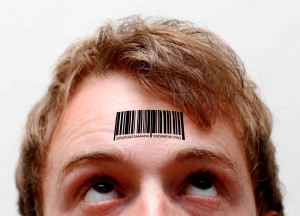
If I were to scan Kristin Hannah’s The Nightingale, post 16% of it on my website to attract visitors, and then sell advertising at prices justified by the number of visitors, I would be infringing on Hannah’s copyright. I could (and probably should) be sued for hundreds of thousands of dollars.
But when Google does the same thing with millions of books, it is not infringing. Instead, Google is applauded for expanding “public knowledge and understanding.” Is this legal?
This is one of the key questions behind the case commonly known as Authors Guild v Google.
Background
In 2005, Authors Guild and others sued Google claiming that Google’s digitizing of millions of books to build a searchable database was copyright infringement on a massive scale. After a protracted battle, U.S. Circuit Judge Denny Chin found that the Google project was fair use and not infringement. Authors Guild appealed the ruling and lost. The Appeals Court affirmed the lower court decision of fair use and went on to say that the Google project provides a public service without violating intellectual property law. Authors Guild is now petitioning the Supreme Court to hear and review the case.
A few weeks ago, I was asked to represent the ‘voice of the author’ at a discussion of the case at the Northwestern Law School Journal of Technology and Intellectual Property Symposium. This gave me a reason to read the court opinions and petitions. The briefs range from the impassioned (Author’s Guild) to the arrogant (Google’s) and are worth a read for anyone interested in learning more.
But I came away from the whole experience with two distressing observations,
- The courts keep expanding the scope of fair use, and
- Writing, whether it is literature, scholarship or smut, has become a commodity to be monetized.
The Expansion of Fair Use
Fair use is any copying of copyrighted material (even verbatim) for a limited or “transformative” purpose, such as commentary, criticism, or parody. Fair use may be done without permission from the copyright owner and is not considered infringement.
Traditionally, courts considered four factors in deciding whether a use was fair use.
- The purpose and character of the alleged fair use.
- The nature of the original copyrighted work.
- The amount and substantiality of the portion used in relation to the copyrighted work as a whole.
- The effect of the use upon the potential market for, or value of, the copyrighted work.
And now there’s de facto fifth factor:
5. Is the work “transformative?”
 Since the 1994 Supreme Court ruling in Campbell v. Acuff-Rose Music, courts also consider whether a use is “transformative.” Originally, transformative meant that the user added sufficient expressive content to the original so that the work appealed to a new audience or imparted a new message. The inquiry focused on additional expression and innovation.
Since the 1994 Supreme Court ruling in Campbell v. Acuff-Rose Music, courts also consider whether a use is “transformative.” Originally, transformative meant that the user added sufficient expressive content to the original so that the work appealed to a new audience or imparted a new message. The inquiry focused on additional expression and innovation.
However, the law is organic. It grows and evolves. It sprouts tangled tendrils and invasive branches in unintended and unexpected directions. Before long, courts began to consider whether a use was transformative not because it introduced new expression, but because it permitted the old work to be used in a new way. A work could be functionally transformative even if it were not expressively transformative.
Really?
No one thought digital readers were a transformative use. Publishers did not release ebooks by the millions claiming that digital delivery was so transformative they didn’t need permission from or to pay royalties to authors.
How about online file sharing? If you follow this reasoning, then wasn’t Napster’s use transformative? Didn’t it provide a new functional use for old content?
And what about live streaming or other new technologies coming down the road?
While this argument seems weak to me, courts embraced it. The Google fair use ruling is simply another step down a slippery slope.
Is There a Bias in Favor of Technology?
Face it, the Google mass digitization project is rather awesome. It involves:
- Physically handling and scanning tens of millions of books, many bound and in poor shape;
- Converting millions or perhaps billions of scanned pages into searchable text;
- Delineating snippets that match search queries; and
- Collecting data on what snippets are viewed and by whom.
A project of this size is expensive. Google funded it without taxpayer assistance, although many would argue that writers and publishers subsidized the project by losing out on licensing fees.
Judges tend to be middle-aged or older, and perhaps they were a bit wowed by the technological capacity and tenacity of one of the fastest growing companies in the world. Were they reluctant to impede a project that allows all of us to access the works of great scholars from our smartphones?
Are the Courts’ Counter-Balancing the Extension of the Copyright Term?
Over the last few decades, Congress has repeatedly extended the duration of a copyright so that now it runs for the author’s life plus seventy years. In some cases, copyrights last up to 120 years. These extensions were passed primarily at the behest of Disney and other holders of large portfolios of copyrighted work.
Are the courts consciously or unconsciously trying to balance the interests of copyright owners with the interest of the public in having access to expressive work? Perhaps. But have we created a system that protects large interests, such as Disney’s, at the expense of small interests such as academic authors whose copyrighted works are searchable on Google? After all, if researchers find what they need online for free, then there is less market for the sale of scholarly books.

Treating Literature as a Commodity
One of least favorite phrases is content creator.
Content is what settles in the cereal box after packaging. Or the lumpy stuffing in my dog’s bed or those pesky styrofoam forms you can’t recycle.
My writing is not content. Sometimes it’s brilliant and inspiring, others times it is rank and rough, but it’s something of value called intellectual property. Notions of fairness and rules of law have honored and protected intellectual property for centuries.
But to Google, literature is nothing but generic bits of data, useful only to draw users to their search engine and to sell ads.
Many people disagree with me. The Google ruling has been applauded as a win for the free and open sharing of knowledge. I will admit Google’s search engine has permitted me to research obscure topics without leaving my desk or shelling out money. But let’s consider the cost.
Everyone has read a book that has made them cry, or an essay that changed their thinking, or a poem that took their breath away. Stories connect us across centuries and continents. Good, insightful writing is hard, and making money from that writing is even harder. Copyright law provides a way for creators of these stories, essays, poems and art to enjoy some compensation for that hard work.
We have to ask whether a society is better off in the long run if it does not protect its creators.
Yesterday, I did a live webinar with Joel Friedlander on how to set-up your self-publishing business. including information about business names and taxes. You can view it here. Why Authors Who Want to Self-Publish Need a Business Hat
For more details about business set-up, Joel and I put together a product full of information and forms, including form releases and contracts. As a bonus you’ll also get a free e-book of Self-Publisher’s Legal Handbook. Interested? For more info, click HERE.
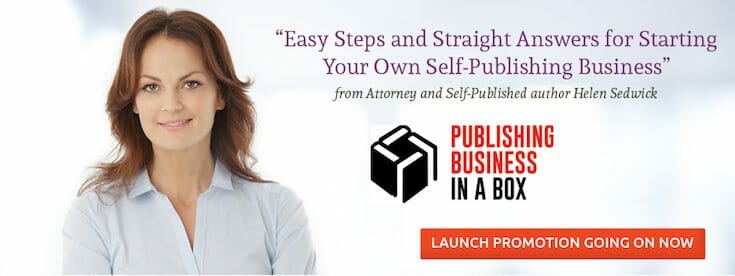

What are you doing Thursday, Feb. 11 at 1 Pacific time/4 Eastern time?
I’ve teamed up with Joel Friedlander to present a webinar on business basics for writers, particularly the nuts and bolts of setting up your self-publishing business.
And it’s free.
Among the topics we’ll discuss:
- When to form a corporation or limited liability company
- Why and how to select an imprint name
- What business permits and licenses every business needs
- Whether to set up separate bank, PayPal and other business accounts
- Must-know triggers for tax reporting and payments
- Some guidelines for growing your business beyond the book
There are many reasons for treating your writing as a business, especially if you are self-publishing.
- You’ll have more time for writing. You’ll save yourself hours of frustration digging through piles trying to find information.
- You’ll be ready for success. As your sales increase, you will be prepared to measure and manage that growth.
- You’ll avoid losses. If you have a better handle on cash flow, you’ll know when your expenses are getting too far ahead of your income.
- You’ll know what works. If you have a method of tracking sales, you’ll know which marketing efforts paid off and which were a bust.
- You’ll avoid mistakes, like forgetting to collect and pay sales tax or to deliver 1099s to freelancers.
- You’ll save on taxes. If you operate your writing venture as a business, you are more likely to be able to deduct writing expenses from your non-writing income and reduce your tax bill.
- You’ll feel more legit. If you don’t treat your writing as a legitimate business, then no one else will, particularly the IRS.
- Your heirs will thank you. If you are hit by the proverbial bus, your heirs will appreciate your organization.
When: Thursday, February 11, 2016 at 1:00 p.m. Pacific (4:00 p.m. Eastern)
Register Here: “Why Authors Who Want to Self-Publish Need a Business Hat”
At the end of the webinar, we’ll introduce Publishing Business in a Box to help you set yourself up as a self-publisher.
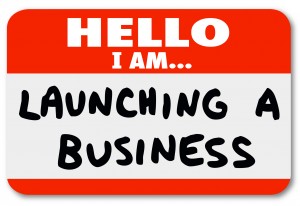
I hope you can join us.
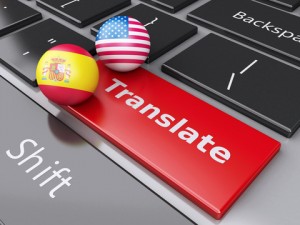 David Vann is one of the most accomplished U.S. authors you’ve never heard of. His award-winning works have been translated into nearly 20 languages, and he’s a former Guggenheim Fellow and Stegner Fellow.
David Vann is one of the most accomplished U.S. authors you’ve never heard of. His award-winning works have been translated into nearly 20 languages, and he’s a former Guggenheim Fellow and Stegner Fellow.
Even though Vann’s books are published by a major publisher, he receives more attention and more sales abroad. He claims he has sold more books in Barcelona than in the entire U.S.
Are you next?
International sales represent a golden opportunity for writers.
Not long ago, selling rights internationally required a network of agents, publishers, translators, and distributors. It was almost impossible for independent authors to break into the market. But social media, email, online retail platforms, and advances in technology have made exploiting international rights easier than ever. Writers can engage with readers all over the world without leaving their desks.
Translation is an art, just like writing. A literary translator must try to capture the original voice, meaning, characters and pacing. Finding a translator is extremely tricky, and the more literary the book, the trickier it gets. But for those looking to dive in, here are some options.
Two newish companies are helping authors and translators connect, Babelcube and Fiberead. We expect others will be entering this potentially huge market. A little about these companies.
Babelcube
Babelcube connects authors with translators and distributes the translated books internationally.
Babelcube’s process is similar to ACX’s royalty-share structure. The author pays nothing up-front for the translation, but shares royalties with the translator and with Babelcube on a sliding scale depending on the total net revenues generated by the translated book. Basically, the more books sold, the more the author earns.
As of November 2015, the basic terms were:
- For the first $2000 in net receipts, the author gets 30%, the translator 55%, and Babelcube 15%.
- For net receipts between $2,001 and $5,000, the author gets 45%, the translator 40%, and Babelcube 15%.
- For net receipts between $5,001 and $8,000, the author gets 65%, the translator 20%, and Babelcube 15%.
- For net receipts over $8,000, the author gets 75%, the translator 10%, and Babelcube 15%.
Net receipts means the monetary amount (in US Dollars) received by Babelcube from sales of each unit sold by Babelcube and Babelcube’s sub-distributors, less any cash incentives, promotional discounts, sales or use taxes, excise taxes, value-added taxes, duties, distribution fees, and returns.
Similar to ACX, the author posts information about the book on the Babelcube site and potential translators contact the author if they are interested. The author selects the translator and reviews and approves the translation. Once the translation is complete, Babelcube has the exclusive right to distribute the translated version of the book for five years, renewing automatically for one-year periods unless either party gives the other written notice of termination at least 60 days prior to the renewal date. It distributes ebooks through various channels including Amazon, Google, Apple, Nook, Kobo, Scribd and hundreds of regional and country online retailers and print books through CreateSpace.
The author must provide a cover for the translated work. I suspect the author also provides an ISBN.
The author retains all rights in both the original text and the translated text. The translator assigns to the author all rights to the translation, including copyright and moral rights.
As of November 27, 2015, Babelcube translates works into the following languages:
- Afrikaans
- Dutch
- English
- French
- German
- Italian
- Japanese
- Norwegian
- Portuguese
- Spanish
Fiberead
Fiberead offers translating and marketing services for the Chinese market. As of November 27, 2015, they translate into simplified and traditional Chinese only.
China represents a huge market. Who wouldn’t want to jump in. However, writers should be aware that Fiberead’s contract is not author-friendly, especially compared to Babelcube’s. Among other things,
- Fiberead controls the choice of translators, pricing, and marketing.
- Fiberead retains all rights to the translated work even after the agreement terminates.
- Author’s royalties are 30% to 40% of net sales receipts for ebooks, but Fiberead deducts all kinds of expenses from the net sales receipts, including publishing fees and marketing costs.
- Fiberead claims an 18-month exclusive on the print version of the translated book and a right of first offer after that.
We will check in on the site from time to time to see if they begin to offer more author-favorable terms .
Just yesterday, I engaged a translator through Babelcube to translate Self-Publisher’s Legal Handbook into Spanish. I am excited to reach a new audience. I’ll post about my experience as I move through the process.

 n public.
n public.

 Suppose you are about to submit a query and sample chapters to an agent. A pop-up window appears requiring you to agree to a bunch of legalese including the following:
Suppose you are about to submit a query and sample chapters to an agent. A pop-up window appears requiring you to agree to a bunch of legalese including the following: What’s a writer to do?
What’s a writer to do? Many authors assume the legal disclaimers at the front of their books are supposed to be boring. They presume some pricey lawyers devised standard legalese, and they dare not depart from the norm.
Many authors assume the legal disclaimers at the front of their books are supposed to be boring. They presume some pricey lawyers devised standard legalese, and they dare not depart from the norm. A disclaimer can also set the historical context. In my novel
A disclaimer can also set the historical context. In my novel  Mary Karr, in her memoir The Liars’ Club, apologizes for nothing. She starts the book with her sister asking her mother whether a bullet hole in the kitchen wall happened when her mother shot at her father.
Mary Karr, in her memoir The Liars’ Club, apologizes for nothing. She starts the book with her sister asking her mother whether a bullet hole in the kitchen wall happened when her mother shot at her father. I changed the names of some nice people to maintain their privacy. I changed names of some bad people if I’m no longer as pissed off as I used to be and I don’t want to embarrass them or their descendants. Or if I think someone might sue me or beat me up.
I changed the names of some nice people to maintain their privacy. I changed names of some bad people if I’m no longer as pissed off as I used to be and I don’t want to embarrass them or their descendants. Or if I think someone might sue me or beat me up. 







